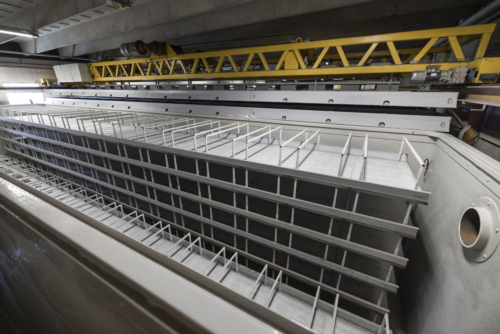Finnish Startup, Carbonaide, raises EUR 1.8 million in seed funding for its technology of making concrete with a negative carbon footprint. The funds will be used to integrate the company’s CO2 curing technology into an automated production line of a precast concrete factory in Hollola, Finland.
Carbonaide, a VTT Technical Research Centre of Finland spin-off company enabling carbon-negative concrete production, has raised EUR 1.8 million in seed funding led by Lakan Betoni and Vantaa Energy. In addition, business Finland and other Finnish concrete companies and strategic investors provided public loans and in-kind contributions to complete the round.
The funds will be used to integrate the company’s CO2 curing technology into an automated production line of a precast concrete factory in Hollola, Finland. Carbonaide can mineralise up to five tonnes of CO2 per day and increase the production of carbon-negative concrete products 100-fold with its factory-sized pilot unit and fully operational value chain.
The concrete industry is responsible for 8% of global CO2 emissions, with most of the emissions originating from ordinary Portland cement manufacturing: one tonne of ordinary Portland cement creates 800–900 kilogrammes of CO2 emissions. With legislation tightening around construction material emissions, industrially feasible technologies to reduce concrete CO2 emissions are desperately needed.
Carbonaide’s solution is based on an efficient carbonation method that uses an automated system at atmospheric pressure to bind carbon dioxide into precast concrete. By lowering the required cement content and mineralising CO2, the technology can cut CO2 emissions in half of traditional Portland cement concrete.
When industrial byproducts such as slags, green spirits, and bio-ash are used in the binding process instead of traditional cement, the result is carbon-negative concrete. CO2 is permanently stored and eliminated from the carbon cycle as a result of this procedure.
With governments instituting taxes, emission trading mechanisms, renewable energy targets, and consumers willing to pay a premium for low-carbon products, material producers and construction firms have recognised the need to adapt to the new market.
Carbonaide’s objective is to have ten operating plants in the Nordics by 2026 and bind about 500 megatons of CO2 annually by 2050, equating to 10-20% of the concrete market.
“Our goal at Carbonaide is to create a more sustainable future with cutting-edge tech that doesn’t just reduce the carbon emissions of construction materials like concrete, but that traps more CO2 than they emit throughout their lifetime. It is very natural that the constructed environment becomes a CO2 sink as it is the largest volume of man-made material,” says Tapio Vehmas, CEO of Carbonaide.
“Avoiding carbon dioxide emissions should always be the primary mechanism to foster biodiversity. However, carbon capture and permanent storage of unavoidable CO2 emissions are needed to enable a sustainable carbon cycle, e.g., in the Waste-to-Energy sector. Carbonaide technology is an excellent example of how to both reduce and utilise existing CO2 in new products and permanently store carbon from the cycle,” says Matias Siponen, Business Development Manager from Vantaa Energy Ltd, one of Carbonaide’s strategic investors.



